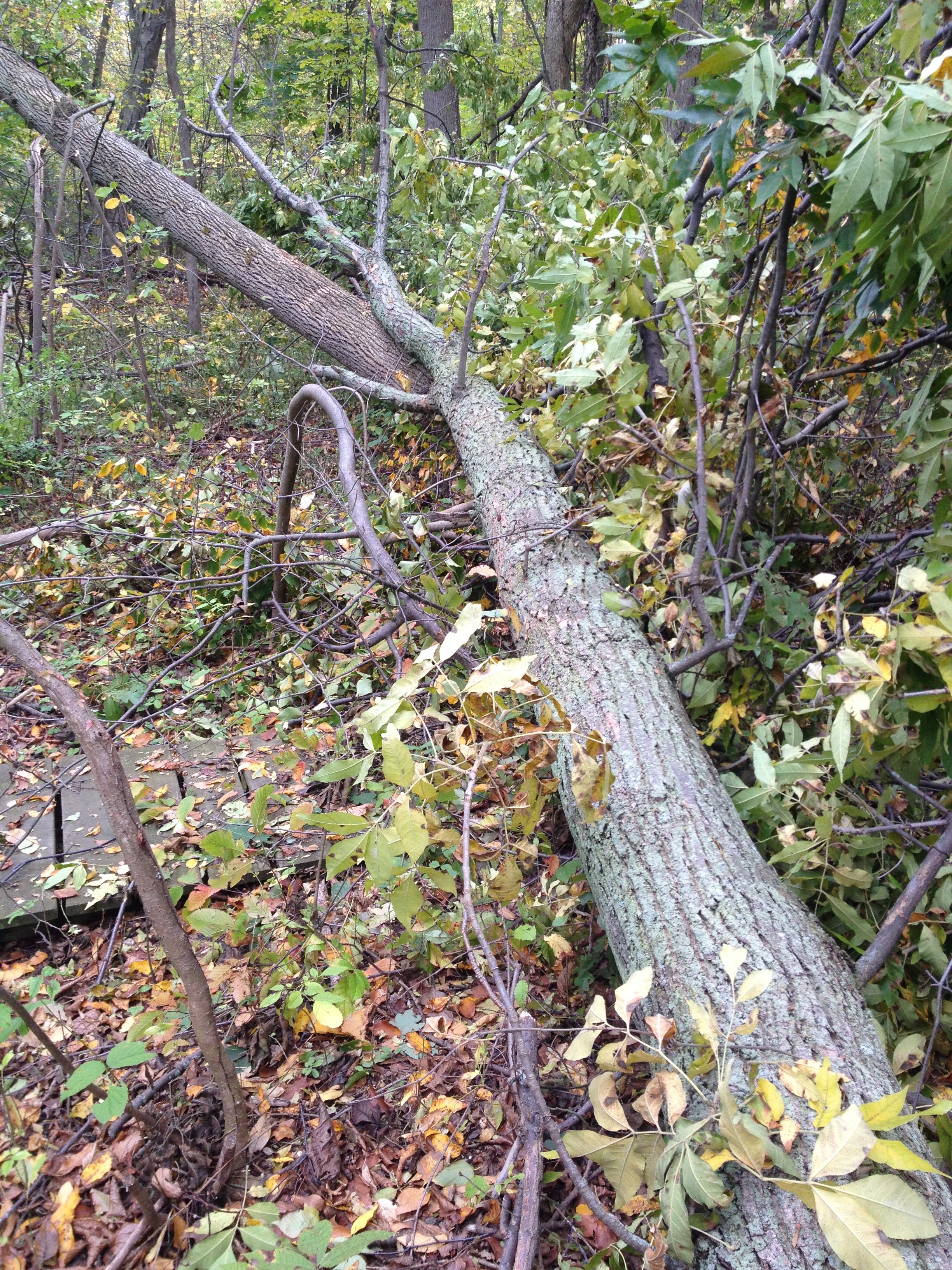Preview the Fall/Winter Newsletter article - including more images - here.
Embracing the “New Normal” of Caring for Protected Lands
Adapting for climate change and improving trail accessibility
The cracking skeletons of large dead ash trees at Island Cottage Woods tell the tale of invasive species and higher flooding levels - both due to climate change . To protect visitors and manage these issues, Genesee Land Trust closed the nature preserve in mid October.
Dead ash trees can fall in any direction, including across trails and boardwalks.
The Greece property will remain closed to the public for at least two years to plan and complete extensive work before re-opening.
This project illustrates the “new normal” in nature preserve management. Today there’s much more work needed to deal with the impacts from climate change and to improve trail accessibility.
But there’s good news
Thanks to your ongoing support, Island Cottage Woods is still a thriving habitat for migratory birds and other wildlife.
Without land conservation and proactive management, climate change would have significantly harmed the 61-acre wooded wetlands that store carbon, filter water, and manage Lake Ontario flooding.
“The land is healthy and is still doing its job because supporters and staff have cared for Island Cottage Woods for almost 25 years,” says Executive Director Lorna Wright.
Managing invasive species
When we planted the young native trees, we placed tubes around them to protect them from hungry deer. Today, all the trees are big enough to not need these tubes.
Between 2015 and 2017, before the Emerald Ash Borer (an invasive pest) arrived, volunteers helped plant more than 2,500 young trees and shrubs.
“These native plants needed a chance to take root and grow before all the ash trees died,” Lorna explains.
“This replacement tree canopy — and our ongoing land management — has kept invasive plants from taking over. Warblers are still visiting and wildlife are thriving.”
Except for several old oak, maple, hickory, and hornbeam trees, most of the large trees at Island Cottage Woods are dead or dying ash.
What comes next
Land management staff are developing a hazardous tree removal plan. All dead or dying trees within 50 feet of the trail will be cut down for safety.
Some snags (upright dead trunks) will be left for woodpeckers, wood ducks, and other wildlife.
Land Trust staff have taken down a few dead ash trees every year. But the large scope and complexity of this project requires professional arborists.
The downed trees will be left in the woods for natural decomposition. Insects and fungi will recycle nutrients back into the soil, continuing to feed the young, healthy vegetation we’ve planted.
“As we do with every project, we’re going to take our time and make sure everything done supports the health of this important wooded wetland,” says Preserve Manager Will Macaluso.
Building better boardwalks
More than just the trees have changed at Island Cottage Woods since donors like you protected it in 1999.
Lorna (in white hat) and Land Trust staff are looking at dead/dying ash trees adjacent to an old boardwalk. The chicken wire across the wood provides grip during slippery conditions. These boardwalks need to be replaced.
Annual trail mulching isn’t enough anymore. Across the preserve, increased flooding from Lake Ontario floats old boardwalks out of place and creates new muddy spots.
Island Cottage Woods needs about 1,100 feet of new boardwalks that are anchored into place and wheelchair accessible. Some will be like the one pictured at right, while others will be elevated with railings.
Staff estimate the work will cost $150,000 or more. This level of investment is what it now takes to care for nature preserves and also make them accessible and adaptable, Lorna says.
“Looking to the future, we want to make sure the trails we build today will meet the needs of our changing climate and community in the decades to come.”
Photos by Genesee Land Trust staff





